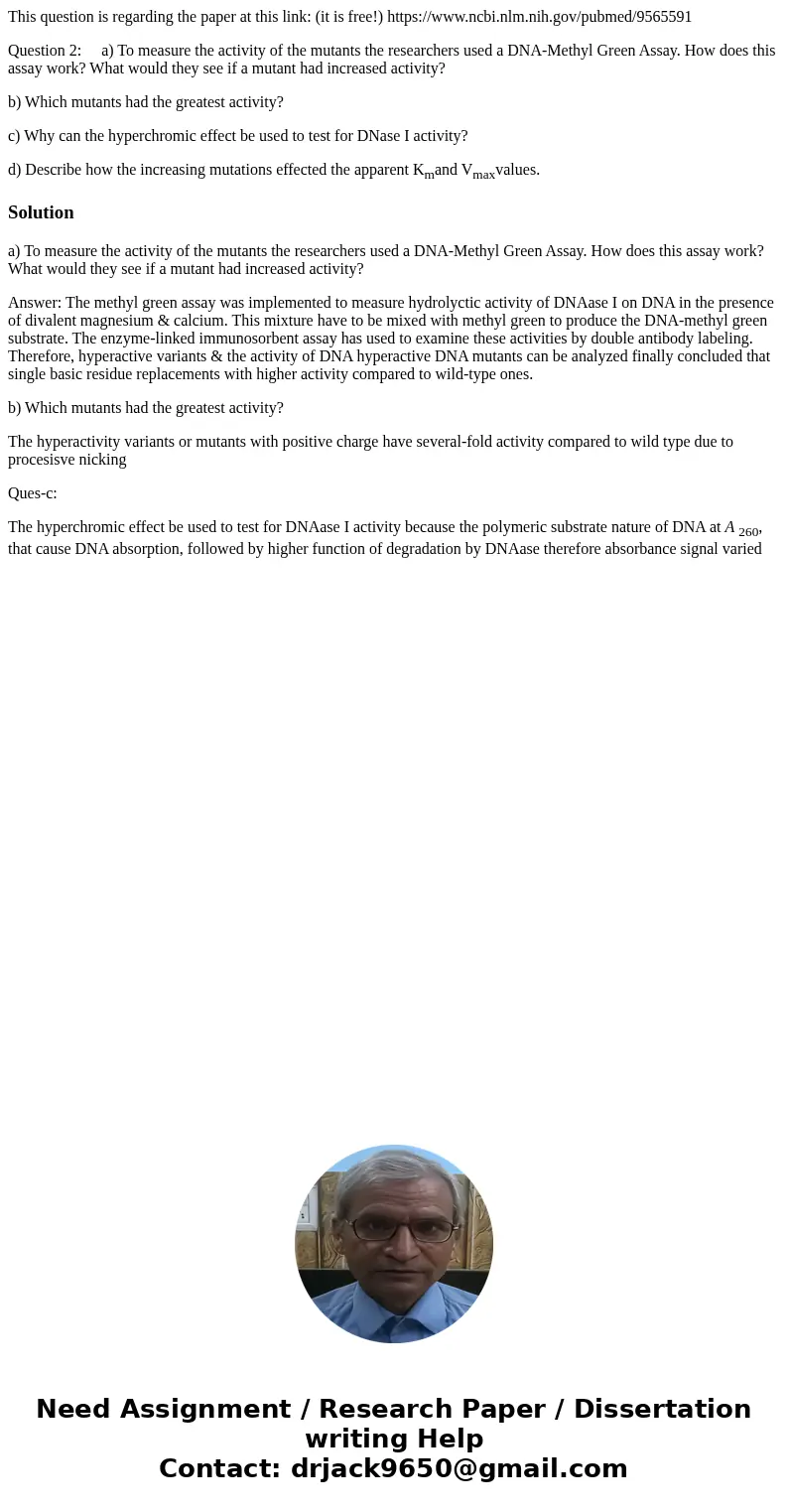This question is regarding the paper at this link it is free
This question is regarding the paper at this link: (it is free!) https://www.ncbi.nlm.nih.gov/pubmed/9565591
Question 2: a) To measure the activity of the mutants the researchers used a DNA-Methyl Green Assay. How does this assay work? What would they see if a mutant had increased activity?
b) Which mutants had the greatest activity?
c) Why can the hyperchromic effect be used to test for DNase I activity?
d) Describe how the increasing mutations effected the apparent Kmand Vmaxvalues.
Solution
a) To measure the activity of the mutants the researchers used a DNA-Methyl Green Assay. How does this assay work? What would they see if a mutant had increased activity?
Answer: The methyl green assay was implemented to measure hydrolyctic activity of DNAase I on DNA in the presence of divalent magnesium & calcium. This mixture have to be mixed with methyl green to produce the DNA-methyl green substrate. The enzyme-linked immunosorbent assay has used to examine these activities by double antibody labeling. Therefore, hyperactive variants & the activity of DNA hyperactive DNA mutants can be analyzed finally concluded that single basic residue replacements with higher activity compared to wild-type ones.
b) Which mutants had the greatest activity?
The hyperactivity variants or mutants with positive charge have several-fold activity compared to wild type due to procesisve nicking
Ques-c:
The hyperchromic effect be used to test for DNAase I activity because the polymeric substrate nature of DNA at A 260, that cause DNA absorption, followed by higher function of degradation by DNAase therefore absorbance signal varied

 Homework Sourse
Homework Sourse